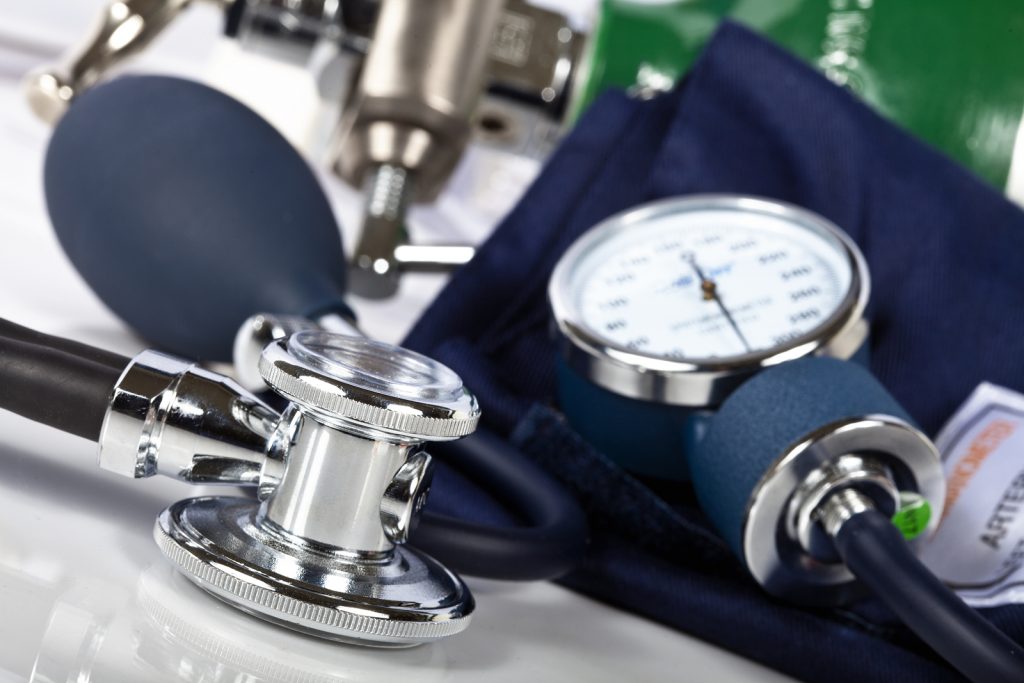How does a blood pressure monitor work?
Forest Medical Calibration Services | Blood pressure is checked with the use of a cuff, which is inflated either manually or automatically. The inflation of the cuff cuts off blood flow and is slowly released to allow intermittent flow through the brachial artery, which gives a reading of the systolic pressure. With a manual version, a technician will listen for the pulse with a stethoscope and obtain a second reading, the diastolic pressure. In an automatic cuff, there is a sensor that does this second reading, along with the first, and both readings are shown on a screen.
What are the advantages of an automatic blood pressure monitor?
In a hospital, emergency, or professional setting, a fast and accurate blood pressure reading is critical and could be a matter of life and death. An automatic blood pressure monitor eliminates the chance of human error. Manual monitors are dependent on the skill of the technician, and readings can vary.
What different types of blood pressure cuffs are available?
The most common cuff is the reusable cuff, normally made from nylon material, which is durable and easily cleaned. This cuff is used on multiple patients. The disposable cuff is gaining in popularity amidst rising concerns about infections that can be acquired in a hospital setting. These cuffs are usually manufactured from vinyl or polyester, are single or limited use, and can be found in emergency rooms, operating rooms, and intensive units and neonatal units. D-ring cuffs were developed for home use, as they are easier to apply without assistance. There are also specialty cuffs that are expressly for use in ambulatory or exercise stress-testing environments. They have an elastic sleeve that stays in place during extended movement.
What are some of the new technologies in blood pressure monitors?
Technology has brought many improvements to blood pressure monitoring. Automatic monitors take readings quickly and accurately. Ambulatory monitors are lightweight and allow for long periods of movement. Wireless technology can transmit information and data to remote locations and interface with electronic medical records. In addition, blood pressure monitors are often packaged as part of vital signs monitors, which measure several vital signs.
How can I find a more affordable blood pressure monitor that is suitable for use in a professional medical setting?
Professional blood pressure monitors can cost thousands of dollars when purchased new. Used monitors, by comparison, can be substantially less. Just be sure that your reconditioned monitor is from a reputable dealer and is guaranteed. It’s a great option if you are a startup office or clinic on a tight budget.
Blood Pressure Monitor – Forest Medical Calibration Services
Forest Medical specialises in Blood Pressure Monitor Calibration and can provide all the help you need to keep your monitor in good condition. This will ensure that you can continue to receive accurate results and stay well informed about your health.
As with all medical equipment, it is important that your blood pressure unit is operating as the manufacturer intended. A slight deviance from the allowable tolerance will give a false reading and could mean receiving the wrong treatment; this applies to both digital and aneroid units.
We recommend that Blood Pressure Monitor Calibration is carried out every 12 months, so why not consider arranging a calibration and testing Contract with Forest Medical. We are able to calibrate and test virtually any medical equipment found in a GP surgery, care home or occupational health department.
Contact Us today to discuss your requirements.

